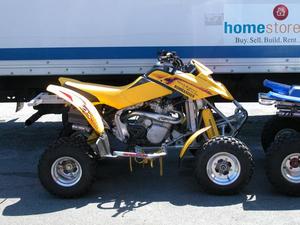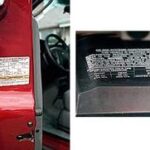Basic routine maintenance is an important part of owning and riding an ATV four-wheeler. Not only will basic routine maintenance extend the life of working components of your ATV four-wheeler, but it will also help keep you and your passengers safe from accidents caused by a lack of basic care. It’s really very easy to perform basic maintenance on an ATV four-wheeler, and if you can ride it, you can easily maintain it.
Proper tire pressure is one of the most important factors in ATV four-wheeler safety and basic maintenance, and the tire pressure should always be checked and adjusted if necessary before you begin riding. If the tire pressure varies between tires, you risk the danger of losing control at a high rate of speed, or your ATV four-wheeler could rollover on a hill. Basic routine maintenance that includes checking and adjusting tire pressure will help prevent devastating damage to your ATV four-wheeler, and more importantly, basic tire maintenance will help keep you safe while riding.
Before you check the tire pressure, check the PSI (pounds per square inch) recommendation located on the sides of your ATV four-wheeler tires, and clean away any excess mud to avoid getting debris in the tire nozzle or the air chuck of the pump. Using a standard tire pressure gauge, check the air pressure. If the tire pressure is lower than the minimum requirement, slowly add more until it properly gauges. If the tire pressure is higher than it should be, slowly release air, and once again measure the pressure. Take the time to make the necessary adjustments until the pressure in all tires is equal.
Do a visual check before each ride, and gauge the tire pressure at least every three to four rides. Basic tire maintenance is very easy, and it only takes a few minutes of your time. The few minutes you take to check and adjust tire pressure could mean the difference between staying safe and having a devastating accident that could have been prevented.
Oil Level
Part of basic routine maintenance on an ATV four-wheeler is checking the oil level, and checking the oil on a regular basis is far more important than many people realize. If you fail to check the oil level of your ATV four-wheeler engine, and it falls below running levels, you could end up with a serious mechanical problem. The engine of your ATV four-wheeler will most likely lock up beyond repair. An engine that has locked up is very costly and sometimes impossible to fix, so to make life easier in more ways than one, and follow a few basic maintenance steps. Basic engine maintenance isn’t something that can be ignored. Regular engine maintenance is crucial.
The first step in checking the oil level is obtaining the right oil for the job. If you have a two-stroke ATV four-wheeler, it’s necessary to use two-cycle engine oil. The oil tank is generally located on the rear of the ATV. Simply remove the rubber lid that seals the tank, and if it is in fact low, fill it very slowly. Usually the inside of the tank contains a sponge that’s designed to keep out contaminants such as dirt and grass, and it takes time for the oil to enter the tank.
After checking the oil level and adding more if required, you’re ready to go. Make it a habit to check the oil level every time you ride to keep your ATV four-wheeler engine running smooth. If you want to avoid costly repairs, this type of basic routine maintenance can never be ignored.




